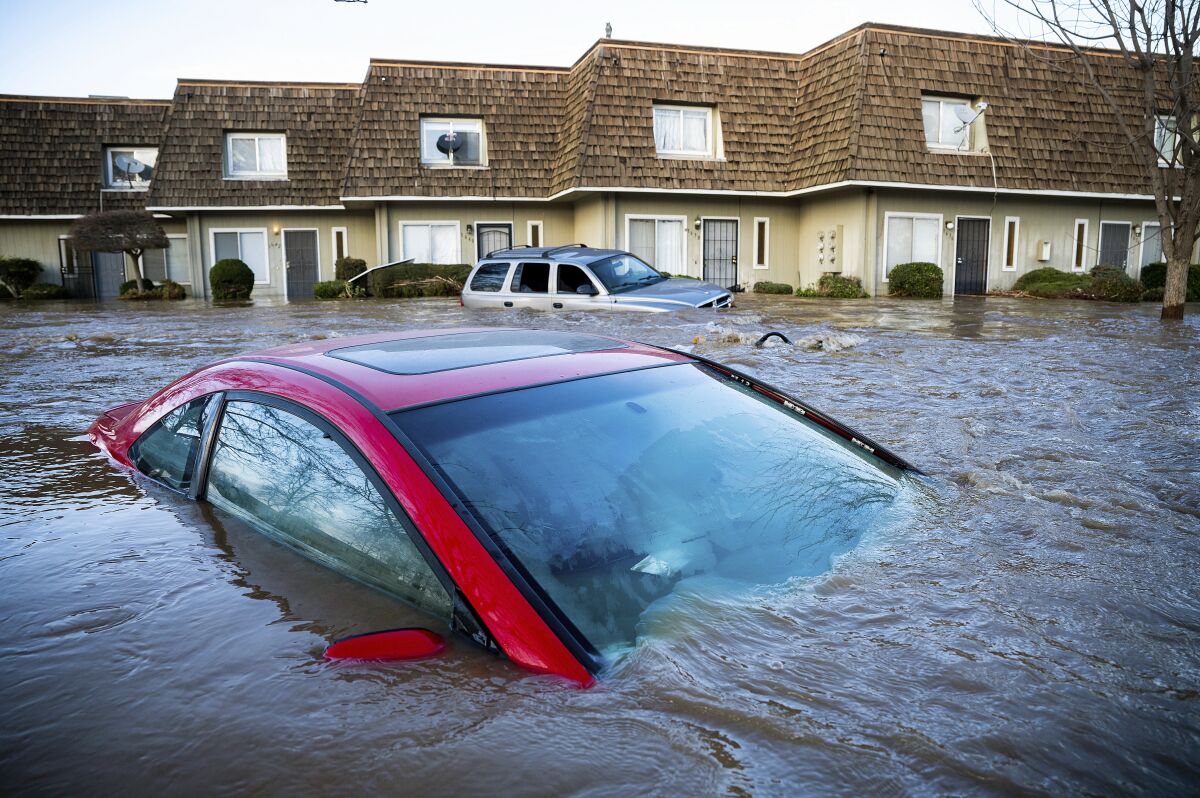During a flood, vehicles face more than just hydro lock dangers. Flooded cars can suffer severe electric damage and wiring issues, making them potential time bombs for owners who are unaware of the risks. This blog post will review the impact of flooding on a car’s electrical system, highlighting the potential dangers, warning signs, and steps necessary to minimize destruction and restore functionality.
The Dangers of Floodwaters
Floodwater significantly threatens a vehicle’s delicate electronic components and wiring. As water infiltrates the vehicle’s interior, it seeps into areas that house critical computerized systems, such as the engine control unit (ECU), fuse boxes, sensors, wiring harnesses, and entertainment systems. If not addressed promptly, the consequences can be devastating, leading to electric malfunctions, system failures, and permanent failure.
Electronic Damage and Wiring Issues
When water gets into the wire connections, it triggers chemical reactions that corrode metal contacts and affect the circuits’ conductivity. As a result, the wiring’s integrity weakens, causing faulty connections and unpredictable behavior.
Short Circuits:
Floodwater introduces moisture to areas that should never be present, causing short circuits. When water bridges the gap between computerized connections, it disrupts the intended flow of electricity, leading to system failures, blown fuses, and potential fire hazards.
Component Risks:
Delicate electronic parts such as the ECU, sensors, and control modules, are highly vulnerable to water destruction. Floodwater can overwhelm these elements, causing them to malfunction or become irreparably injured. The intricate nature of these parts makes their restoration challenging and costly.
Warning Signs and Symptoms
Detecting damage after a car has been exposed to flooding is crucial.
Look out for the following warning signs that may indicate electronic or wiring issues:
1. Malfunctioning electrical systems: Non-functional lights, erratic gauge readings, or unresponsive power windows and door locks can indicate electric problems resulting from water destruction.
2. Persistent warning lights: If warning lights, such as the check engine or ABS light, remain illuminated even after regular repairs, it could indicate water-induced to the associated systems.
3. Strange smells or smoke: Burning or musty smells, along with the presence of smoke, suggest short circuits, and immediate attention is required.
4. Addressing Issues and Restoring Functionality: When dealing with flooding-related destruction, prompt action is essential. To learn more about other symptoms or issues that can happen, then check out “Common Problems with Flooded Cars“
Here are some essential steps to address the issues and restore functionality:
Safety first:
Before attempting any repairs, ensure the vehicle is parked in a dry area, disconnected from the power source, and inspected by a professional.
Professional assessment:
Consult an experienced mechanic or electrician specializing in water-damaged vehicles. They can identify the extent of the destruction, determine which piece needs repair or replacement, and ensure proper restoration.
Wiring and harness inspection:
Thoroughly examine the wiring harnesses for signs of corrosion or damage. Replace any affected wires or harnesses to ensure reliable connections.
Component replacement:
If critical pieces such as the ECU or control modules are harmed, they may require replacement. These parts must often be reprogrammed or calibrated to function correctly with the vehicle’s systems.
Preventive measures:
Consider installing waterproof barriers or protective coatings on vulnerable electric parts to prevent future risks. Raising the vehicle’s breathers and relocating fuse boxes and sensitive electronics to higher positions can also help safeguard against future flooding incidents.
Thorough drying and cleaning:
1. Properly dry out the affected areas to prevent moisture buildup and further harm.
2. Utilize fans, dehumidifiers, and absorbent materials to aid in drying.
3. Clean up any debris or sediment accumulated during the flooding.
Test and verify:
After repairs and replacements, conduct comprehensive testing to ensure all computerized systems function correctly. This includes checking lights, signals, audio systems, sensors, and other electronic elements.
Prevention and Precautionary Measures
While it may be impossible to control natural disasters, there are preventive measures that can reduce the risk of electronic damage and wiring issues caused by flooding.
Avoid flooded areas:
Exercise caution during heavy rains or floods and avoid driving through areas prone to flooding. Pay attention to weather advisories and road closures to stay informed and make alternate travel plans if necessary.
Elevated parking:
Park your vehicle in elevated areas or on higher ground whenever possible to minimize the risk of water submersion.
Protective measures:
Consider installing protective barriers, such as rubber grommets or waterproof covers, around vulnerable control connections and components to provide an additional layer of defense against water intrusion.
Regular inspections:
1. Perform routine inspections of your vehicle’s electric systems and harnesses.
2. Look for signs of wear, corrosion, or loose connections.
3. Address any issues promptly to prevent further destruction.
Conclusion
Flooded cars are prone to electronic harm and wiring issues, significantly threatening their functionality and safety. Water infiltration can lead to corrosion, short circuits, and irreversible repair to delicate electronic components. Identifying any signs of flooding and quickly reducing dangers to a vehicle’s electrical system is important.
Owners can restore functionality and ensure their vehicle’s long-term reliability by following preventive measures, seeking professional assistance, and conducting thorough repairs. Remember, swift action is vital when dealing with water-damaged cars to prevent further complications and costly repairs down the road. If your vehicle has suffered irreparable water damage that makes it no longer fixable, then your only option may be to sell it for scrap to recoup some of your costs. You can Sell Your Car Online by filling up a contact form with 832 Cash For Cars. The process is fast and easy; you will receive cash on the spot and free towing. If you are ready to get rid of your vehicle today, you can also call or text the company at 832-931-8173.




